What is Screen Sovereignty?
Sovereignty is about space and sovereignty is about identity. In the context of colonialism, this means reclaiming space and identity. Visual, or screen sovereignty, are ways that Indigenous artists use new media to claim or reclaim space and identity. Kristen Dowel locates visual sovereignty in the act of production.
“We’re doing it ourselves! We’re producing our own images.” – Cleo Reece, in Kristen Dowell
Visual Sovereignty is process as well as product – medium as well as message, if you will.
How a piece is produced, by whom, and for whom makes a big difference to the final product.
Visual Sovereignty is the unique process of new media creation by Indigenous people with an Indigenous audience in mind. In particular it uses techniques that establish a space that is uniquely Indigenous by mediating who can enter and how. This means that the process of creating a work that establishes sovereignty will influence how that work is received by the audience.
Kevin Burton’s God’s Lake Narrows is an example of screen sovereignty because it establishes Indigenous space and identity by creating Insiders and Outsiders, putting forward an invitation that’s mediated the author and reclaiming representation. The result is that the audience is drawn into a process that brings them into proximity with God’s Lake in an intimate, respectful and uniquely Indigenous way.
Insiders & Outsiders
“I grew up here… If you’re not an Indian, you’ve probably never been there.” – Kevin Lee Burton
“I grew up here… If you’re not from the reserve all the houses may seem the same to you.” – Kevin Lee Burton
Through these two statements, Burton is saying that you are unfamiliar with the place that he is part of and is part of him. This means you don’t have immediate access to the same type of knowledge. You’re an outsider. This isn’t meant to be hostile or unwelcoming, its just the positional reality and his firm but gentle stating of it is important in establishing sovereignty in God’s Lake Narrows.
Part of sovereignty is that there are people that belong and there are people that do not – Insiders and Outsiders. Burton distinguishes between these groups in a powerful way by speaking to a non-Indigenous audience and reminding them that they are outsiders to this piece, to God’s Lake and to Indigeneity.
“There are Differences between you and I.” – Kevin Lee Burton
Sovereignty exists in relationship to the outside. These phrases of differentiation between Indigenous and non-Indigenous audience reinforce sovereignty. Dowel explains that, “the significance of having non-Native audiences recognize these media works as Aboriginal serves as a form of recognition of Aboriginal presence in Canada”.
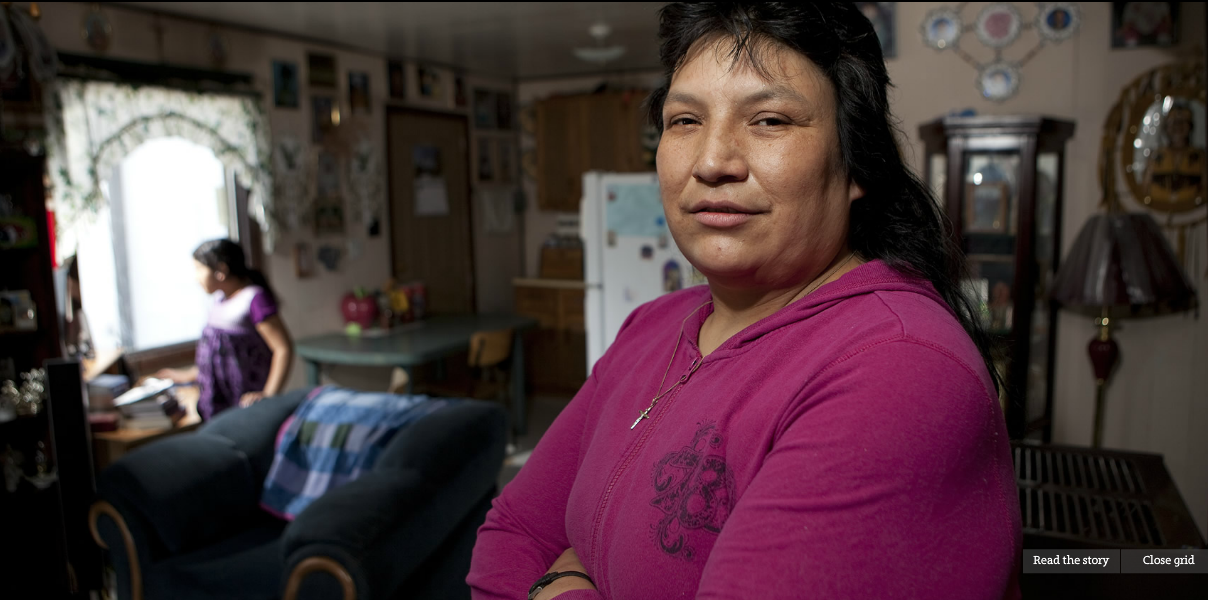
God’s Lake Narrows – Kevin Lee Burton
The photos of people are also a powerful way of creating Insiders and Outsiders. Instead of the viewer intruding and looking in on the subjects, it’s as if they are looking out at the viewer on the outside – as if the viewer is the object. This is a powerful way of communicating sovereignty.
An Artist Mediated Invitation
However, Burton doesn’t stop at differentiating between Insiders and Outsiders. He continues to establish screen sovereignty by initiating a process of invitation with the audience. He invites you into his world and allows you to see God’s Lake Narrows. But it’s not the same view you would get if you just googled it.
Go ahead and try it right now: Google God’s Lake Narrows, select ‘images’ and see what type of view you get.
You don’t get the same sense of the space or identity that Burton provides.
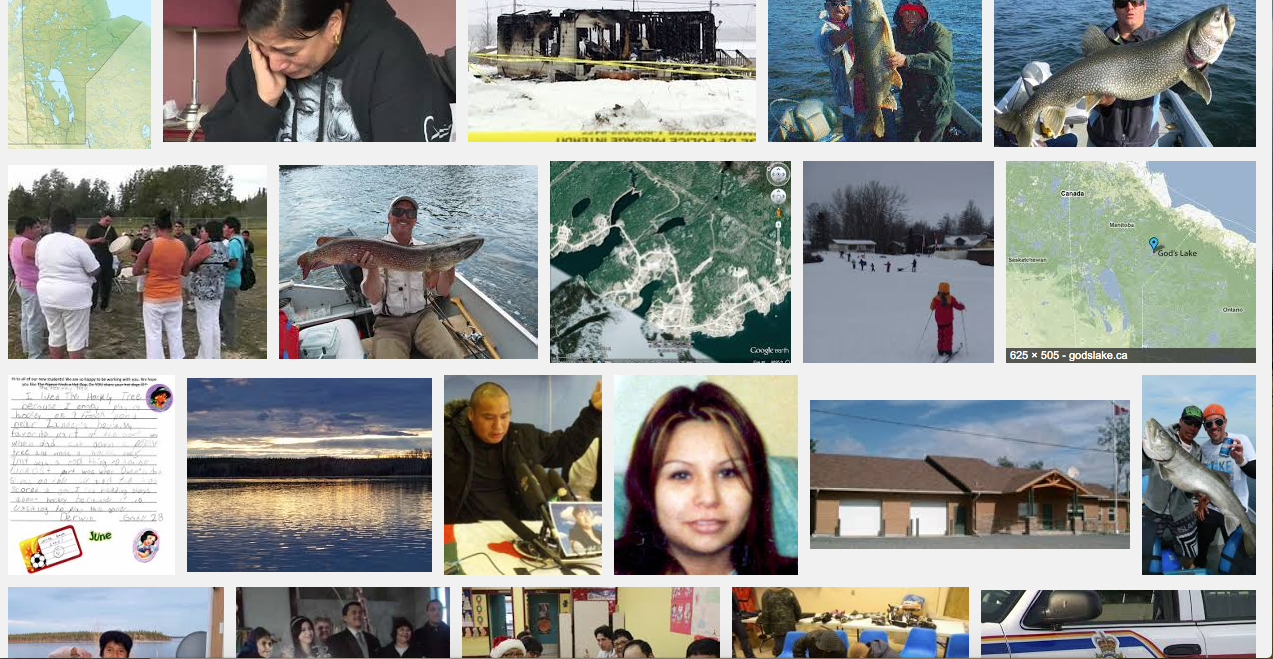
Feel free to share any interesting observations from your Google search in the comments below. We all might get slightly different results!
That’s because the view when you google it is curated by a search engine. The view of the reservation in God’s Lake Narrows is mediated by the artist – an artist who knows the place intimately and who carries it in the fabric of his identity. You can’t get that on Google. Google let’s you control how you navigate the images results. Of course, being a corporation, it also influences what you can see . But it let’s you choose which images you look at, whether you’ll read the caption or not, how long you spend with your curser hovered over an image.
In Burton’s piece he is in control. He determines what images you see and what order they are in and what sounds you hear as you do so. He invites the outsiders in but it is far from voyeurism: The process is mediated by the artist and the viewer must relinquish some of their control if they want to engage with the piece.
This creates sovereignty within the piece but it also extends beyond the artwork and into cyberspace. When you Google God’s Lake Narrows, the results are interspersed with the photos from Burton’s piece staring back at you: a reminder that in an ultra connected cyberspace, Burton’s particular style of screen sovereignty is not confined by the parameters of the National Film Board’s site and claims space and identity that could otherwise be determined by the colonizer.
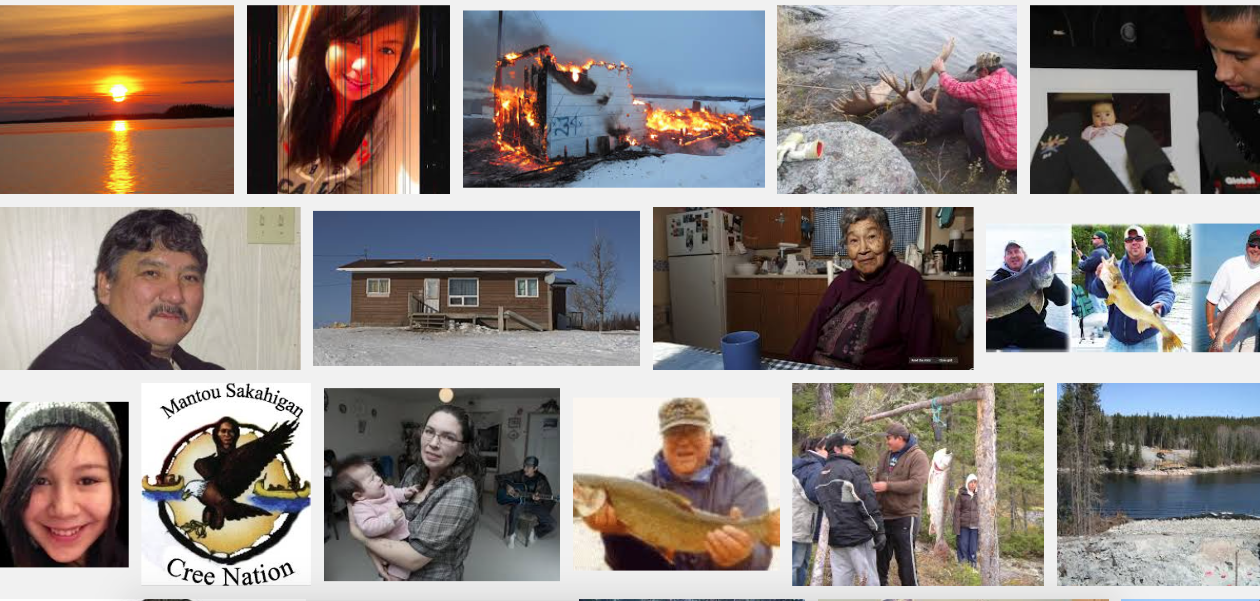
The Process
The process involved in Burton’s invitation first has viewers at a distance but gradually allows them into closer proximity. You start out watching a zoomed out map of Canada as the interactive piece loads.
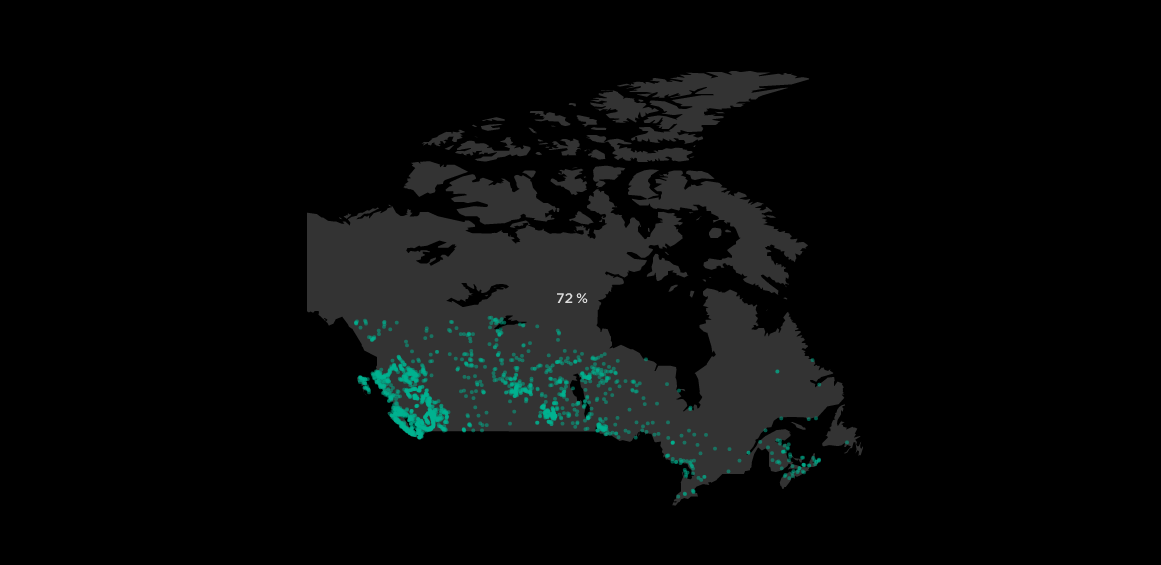
God’s Lake Narrows – Kevin Lee Burton
Then based on the sites geo caching of your location, you’re told how far away you are from God’s Lake: 2,036 km for me. Your specific location is pointed out just as you are told you have little idea of where God’s Lake is – this has a disarming effect.
There’s reciprocity in this. The audience can’t know God’s Lake Narrows while itself remaining unknown. This reminds me of one of my favourite lines in A Tribe Called Red’s We are the Halluci Nation:
“The callers-of-names cannot see us but we can see them.”
The images that Burton chooses continue the process of gradually inviting you closer on the artist’s terms rather than your own. First, you are shown images of the outside of a house – curtains drawn, windows closed.

God’s Lake Narrows – Kevin Lee Burton
Then, by calling your attention to the front porch, he prompts you to look a bit closer than you might have initially.
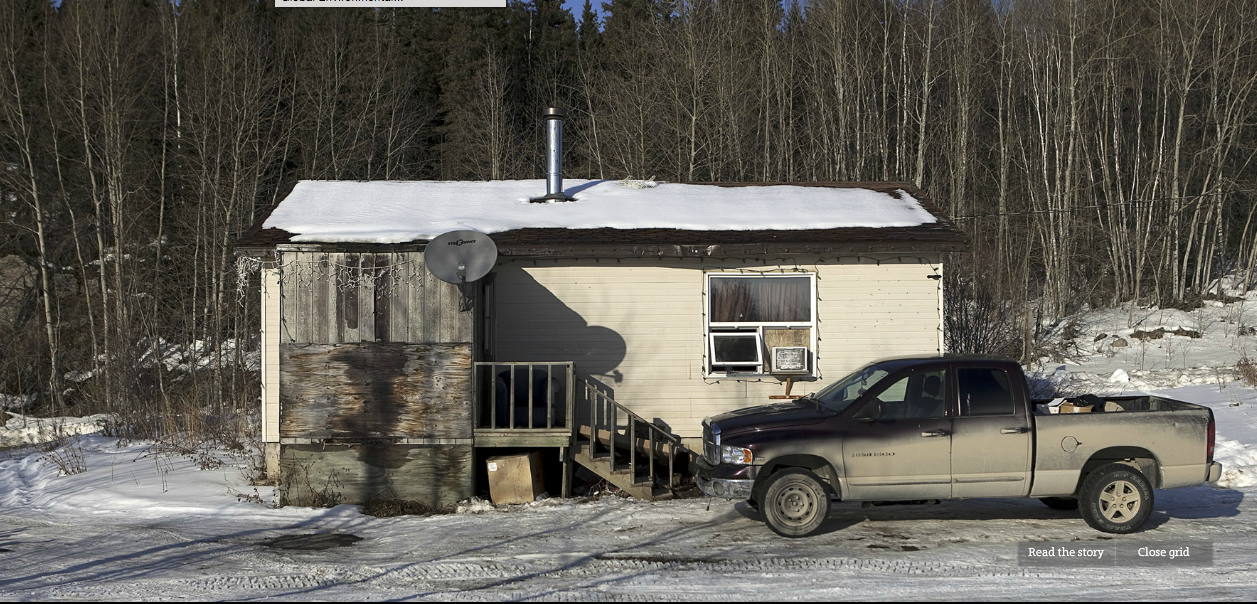
God’s Lake Narrows – Kevin Lee Burton
Only once you’ve taken a closer look at his bidding, spent more time paying attention, are you invited inside the houses. Then you’re in their living rooms, with their children and their family photos, watching their T.V.
And they aren’t houses anymore, they’ve become homes.

God’s Lake Narrows – Kevin Lee Burton
These images very deliberately take you through a process of slow invitation. The sense of hesitancy towards a newcomer is palpable, and eloquently justified by Burton’s words:
“Yeah reserves seem like closed communities and you might feel scrutinized when you’re passing through on the way to the beach or cottage country or whatever. It’s a protective thing. There are different social codes. What do you expect from people that have a legacy of displacement and removal?” – Kevin Lee Burton
Invitation as Sovereignty
The act of invitation is an act of sovereignty. By saying ‘you may enter’, you establish that it is your own space, not the visitors. And to the sound of footsteps crunching on snow, Burton does this, at his own pace, on his own authority. The way he slowly and measuredly brings the audience closer reminds me again of the We Are Halluci Nation music video – how the birds eye view gets gradually closer to the Halluci Nation Seal. Then you can finally read it and it cuts through the name’s placed on the Haluci Nation at the beginning of the video by the “callers-of-names”.
Burton’s invitation is powerful by virtue of extending an invitation to the very people who have hurt him. But it is all the more powerful because it simultaneously rejects the colonial tendency of entitlement to be in an Indigenous space. It subverts the mindset of instantaneous access to information that has come to define the modern age of the worldwide web – the mindset of deserving to know. It confronts the colonial way of consuming knowledge.
The audience isn’t entitled to be in these people’s homes. They may not enter at their own leisure but must be invited and come with respect. There is a constant reminder that you are a guest in a space where the the artist and his subjects are in control. Burton has successfully created an Indigenous space that protects an Indigenous identity form outsiders.
Just like you can’t get all the Bingo numbers in one go, you have to follow Burton’s process to have access to God’s Lake Narrows.

Reclaiming Representation
There is a key shift in the audio when Burton says it’s time to repaint that picture”. All of a sudden the music and voices change to reveal a vibrant community.
The picture that needs repainting that he’s referring to is the “age-old prejudice of reserves as desolate places.” Just as quickly as he speaks back to the legacy of misrepresentation and racism, he counters it, not only through visual sovereignty, but through auditory sovereignty.
“Whoever phoned for a whole pizza at Loraine Trout’s, phone back.”
“Carolyn Nancy bring back the truck, I want to go to work.”
“Recreation Bingo tonight at 8 o’clock.”
“I-29, N-34, O-66, 0-69, I-18, G-57, O-75…”
The announcements heard on CV radio overlaid with the Bingo caller are an intimate look into every day life in God’s Lake – one that you could never experience without and invitation and a host. This is a key part of establishing sovereignty in God’s Lake Narrows. Dowell states that:
“An Aboriginal filmaker’s act of creating a media work is an act of self-determination. Speaking back to the legacy of misrepresentation in dominant media is an act of cultural autonomy that reclaims the screen to tell Aboriginal stories from Aboriginal perspectives.”
This is exactly what Burton accomplishes through the audio in God’s Lake Narrows. It is made all the more beautiful and poignant by the measured process it took for the audience to get to that point.
“It’s time to repaint that picture.” – Kevin Lee Burton
___________________________________________________________________
Resources:
A Tribe Called Red, John Trudell and Northern Voice, “We are the Halluci Nation”. 2016 http://atribecalledred.com
Kevin Lee Burton and Alicia Smith, “God’s Lake Narrows” http://godslake.nfb.ca/#/godslake
Kristen Dowell “Vancouver’s Aboriginal Media World”. Aboriginal Media on the Canadian West Coast. Nebraska: University of Nebraska Press, 2013. 1 – 20.
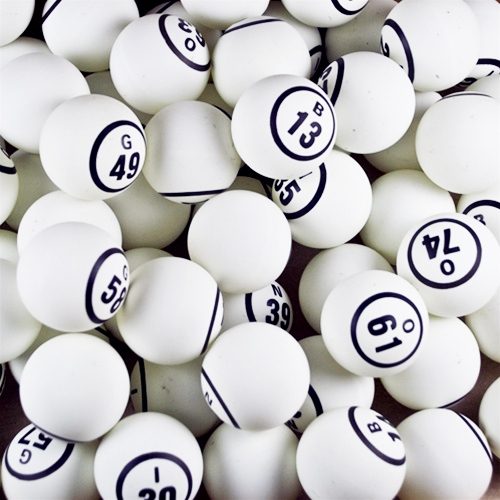
You do some very interesting analysis of GLN via Google searches here, Clara. I am very compelled by this notion that Burton repopulates a google search by claiming sovereign territory in cyberspace. A little more research in google and its practices and history would be helpful here. Wired has written a decent piece on this: https://www.wired.com/2005/08/battelle/
Your reflections on auditory sovereignty are also very intriguing; I’d like to see more compare/contrast work on visual vs. auditory sovereignty and the different ways in which they claim space, interpellate insiders and outsiders, and provide for self-determination.
Nice work!